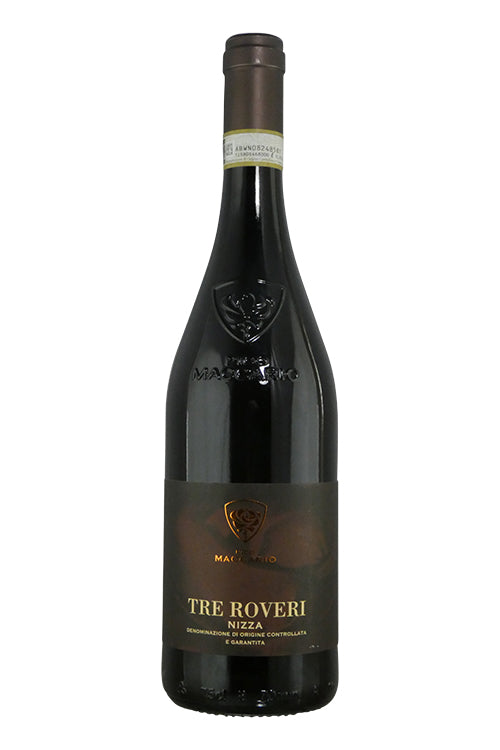1
/
of
1
Pico Maccario Tre Roveri Superiore - 2019 (750ml)
Pico Maccario Tre Roveri Superiore - 2019 (750ml)
Regular price
$29.99
Sale price
$29.99
Regular price
$32.99
Unit price
/
per
Share :

- varietal
- Region
- Sub - Region
- Type
- Reviews
Home to Piedmont in Italy, Barbera is Italy’s third most popular red wine producing vine. Traditionally used in blends to add color and acidity, it is now more frequently bottled as a varietal wine. The grape produces relatively fruit forward wines often with a red fruit note of cranberries, redcurrants, and cherries. Although most are made for near term drinking, in good vintages it can successfully be married with oak, adding tannin and a spicy character that can benefit from a few years cellaring. Along with a few of Italy’s other popular grapes it is occasionally found in vineyards dotted across California.
Along with Tuscany, Piedmont is responsible for most of Italy’s greatest wines. Here, Nebbiolo is the king of grapes with the DOCGs of Barolo and Barbaresco supplying a significant amount of the finest examples. Less expensive, but good value Nebbiolos are made within the larger Langhe DOC which Barolo and Barbaresco are both situated in. Barbera and Dolcetto are the region's other important red grapes. Moscato (Muscat) is the most popular white grape, most of which gets used in making Spumante and Frizzante (semi-sparkling) wines, notably those made in and around the town of Asti. Meanwhile, the region's most popular still white wines are made from Cortese and Arneis. Cortese are mostly made in the province of Alessandria and go by the name Gavi, while Arneis is mainly cultivated in Roero, just north west of Alba.
Alba is one of the very newest Italian DOCs, introduced only in August 2010. It occupies the lower rung of the tiered DOC structure in Piedmont, meaning that the title covers a much broader range of wine styles than more specific DOCs such as Barolo or Barbera d'Alba. The Alba DOC takes its name from the town at its center, one of the two key wine towns in Piedmont (the other is the larger Asti, just to the east, where Asti Spumante and Moscato d'Asti are made). It covers more than just the Alba commune, however, and extends in all four directions to take in the catchment area of all the local DOCs. This larger area gives winemakers more freedom to make wines blended with grapes from several different areas, thus creating subtly different styles. Perhaps even more significant is that rather than being limited to a single grape variety, wines sold under the Alba title can be made from any one or more of around 15 grapes. The effect of this has been a marked increase in plantings of such popular grapes as Chardonnay, Sauvignon Blanc and Cabernet Sauvignon.
Red wine is wine made from dark-coloured grape varieties. The color of red differs based on the grapes variety or varieties used.Interestingly, black grapes yield a juice that is greenish-white. The actual red color comes from anthocyan pigments (also called anthocyanins) from the skin of the grape (exceptions are the relatively uncommon teinturier varieties, which produce a red colored juice). Most of the production centers around the extraction of color and flavor from the grape skin.


